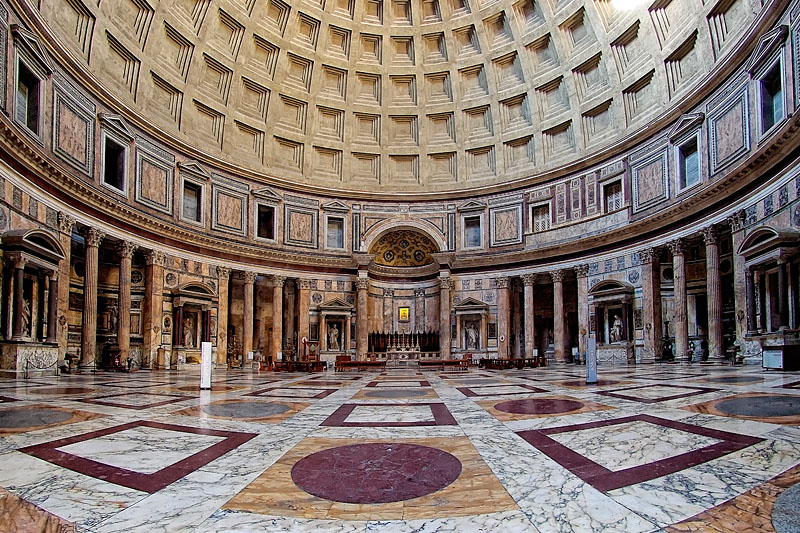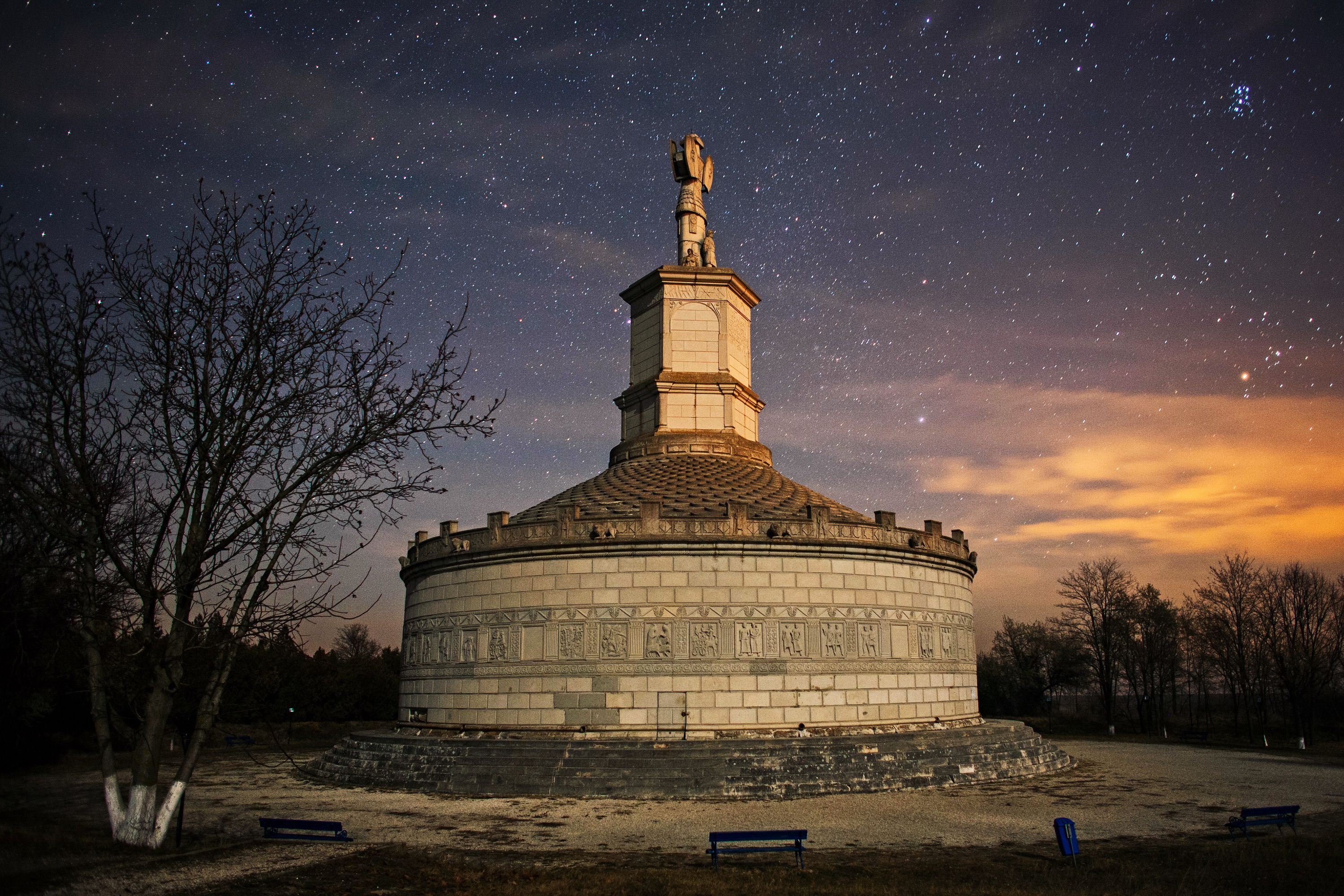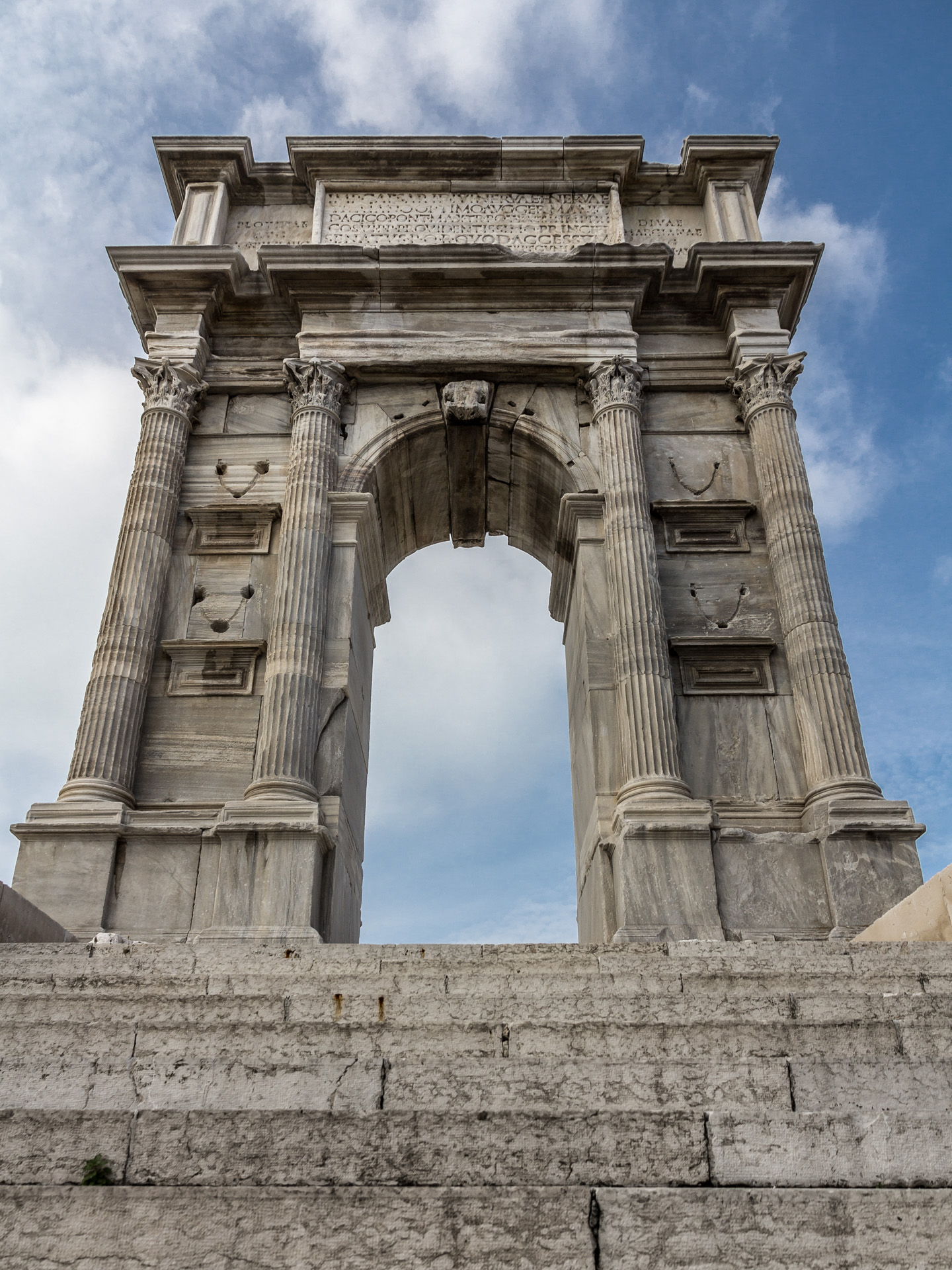|
Apollodorus Of Damascus
Apollodorus of Damascus () was an architect and engineer from Roman Syria, who flourished during the 2nd century AD. As an engineer he authored several technical treatises, and his massive architectural output gained him immense popularity during his time. He is one of the few architects whose name survives from antiquity, and is credited with introducing several Eastern innovations to the Roman Imperial style, such as making the dome a standard. He is also known as ''Apollodorus Mechanicus''. Early life Apollodorus was born in Damascus, Roman Syria. Modern sources refer to him as Nabatean, or as Greek. Neither Cassius Dio nor Procopius, scholars and historians of antiquity, mention his origins when writing of him. Little is known of his early life, but he started his career as a military engineer before meeting future emperor Trajan in Damascus, then being summoned to Rome by him when he was a consul in 91 AD, after his twentieth birthday, and later accompanying him during ... [...More Info...] [...Related Items...] OR: [Wikipedia] [Google] [Baidu] |
Glyptothek
The Glyptothek () is a museum in Munich, Germany, which was commissioned by the Bavarian King Ludwig I of Bavaria, Ludwig I to house his collection of Ancient Greek art, Greek and Roman art, Roman sculptures (hence γλυπτο- ''glypto-'' "sculpture", from the Greek verb γλύφειν ''glyphein'' "to carve" and the noun θήκη "container"). It was designed by Leo von Klenze in the neoclassical architecture, neoclassical style, and built from 1816 to 1830. Today the museum is a part of the Kunstareal. History The Glyptothek was commissioned by the Crown Prince (later King) Ludwig I of Bavaria alongside other projects, such as the neighboring Königsplatz, Munich, Königsplatz and the building which houses the Staatliche Antikensammlungen, State Collection of Greek and Roman Antiquities, as a monument to ancient Greece. He envisioned a "German Athens", in which the ancient Greek culture would be remembered; he had this built in front of the gates of Munich. The Glyptothek is M ... [...More Info...] [...Related Items...] OR: [Wikipedia] [Google] [Baidu] |
Consul
Consul (abbrev. ''cos.''; Latin plural ''consules'') was the title of one of the two chief magistrates of the Roman Republic, and subsequently also an important title under the Roman Empire. The title was used in other European city-states through antiquity and the Middle Ages, in particular in the Republics of Genoa and Pisa, then revived in modern states, notably in the First French Republic. The related adjective is consular, from the Latin '' consularis''. This usage contrasts with modern terminology, where a consul is a type of diplomat. Roman consul A consul held the highest elected political office of the Roman Republic (509 to 27 BC), and ancient Romans considered the consulship the highest level of the '' cursus honorum'' (an ascending sequence of public offices to which politicians aspired). Consuls were elected to office and held power for one year. There were always two consuls in power at any time. Other uses in antiquity Private sphere It was not uncommon ... [...More Info...] [...Related Items...] OR: [Wikipedia] [Google] [Baidu] |
Pantheon, Rome
The Pantheon (, ; ,Although the spelling ''Pantheon'' is standard in English, only ''Pantheum'' is found in classical Latin; see, for example, Pliny, ''Natural History'36.38 "Agrippas Pantheum decoravit Diogenes Atheniensis". See also ''Oxford Latin Dictionary'', s.v. "Pantheum"; ''Oxford English Dictionary'', s.v"Pantheon" "post-classical Latin ''pantheon'' a temple consecrated to all the gods (6th cent.; compare classical Latin ''pantheum'')". ) is an ancient 2nd century Roman temple and, since AD 609, a Catholic church called the Basilica of St. Mary and the Martyrs () in Rome, Italy. It is perhaps the most famous, and architecturally most influential, rotunda. The Pantheon was built on the site of an earlier temple, which had been commissioned by Marcus Vipsanius Agrippa during the reign of Augustus (27 BC – AD 14). After the original burnt down, the present building was ordered by the emperor Hadrian and probably dedicated AD 126. Its date of construction i ... [...More Info...] [...Related Items...] OR: [Wikipedia] [Google] [Baidu] |
Trajan's Market
Trajan's Market (; ) is a large complex of ruins in the city of Rome, Italy, located on the Via dei Fori Imperiali, at the opposite end to the Colosseum. The surviving buildings and structures, built as an integral part of Trajan's Forum and nestled against the excavated flank of the Quirinal Hill, present a living model of life in the Roman capital and a glimpse at the restoration in the city, which reveals new treasures and insights about ancient Roman architecture. Thought to be the world's oldest shopping mall, the arcades in Trajan's Market are now believed by many to be administrative offices for Emperor Trajan. The shops and apartments were built in a multi-level structure and it is still possible to visit several of the levels. Highlights include delicate marble floors and the remains of a library. Construction Trajan's Market was probably built between 100–110 AD by Apollodorus of Damascus, an architect who always followed Trajan in his adventures and to whom ... [...More Info...] [...Related Items...] OR: [Wikipedia] [Google] [Baidu] |
Jona Lendering
Jona Lendering (born 29 October 1964) is a Dutch historian and the author of books on antiquity, Dutch history and modern management. He has an MA in history from Leiden University and an MA in Mediterranean culture from the Amsterdam Free University, taught history at the Free University, and worked as an archivist employed by the Dutch government, before becoming one of the founders of the history school Livius Onderwijs. Career and works Born on 29 October 1964 in Beneden-Leeuwen, Gelderland, Lendering's biography of Alexander the Great (''Alexander de Grote'') attempted to make greater use than earlier scholars of Persian and Babylonian sources. For example, he argued from Babylonian astronomical diaries that Darius III of Persia was deserted by his troops when he faced Alexander at the Battle of Gaugamela, rather than personally leading the retreat as reported by Greek sources. His work, "Alexander de Grote. De ondergang van het Perzische rijk" was described by ''Bry ... [...More Info...] [...Related Items...] OR: [Wikipedia] [Google] [Baidu] |
Hadrian
Hadrian ( ; ; 24 January 76 – 10 July 138) was Roman emperor from 117 to 138. Hadrian was born in Italica, close to modern Seville in Spain, an Italic peoples, Italic settlement in Hispania Baetica; his branch of the Aelia gens, Aelia ''gens'', the ''Aeli Hadriani'', came from the town of Atri, Abruzzo, Hadria in eastern Italy. He was a member of the Nerva–Antonine dynasty. Early in his political career, Hadrian married Vibia Sabina, grandniece of the ruling emperor, Trajan, and his second cousin once removed. The marriage and Hadrian's later succession as emperor were probably promoted by Trajan's wife Pompeia Plotina. Soon after his own succession, Hadrian had four leading senators unlawfully put to death, probably because they seemed to threaten the security of his reign; this earned him the senate's lifelong enmity. He earned further disapproval by abandoning Trajan's expansionist policies and territorial gains in Mesopotamia (Roman province), Mesopotamia, Assyria ( ... [...More Info...] [...Related Items...] OR: [Wikipedia] [Google] [Baidu] |
Ancient Roman Architecture
Ancient Roman architecture adopted the external language of classical ancient Greek architecture for the purposes of the ancient Romans, but was different from Greek buildings, becoming a new architectural style. The two styles are often considered one body of classical architecture. Roman architecture flourished in the Roman Republic and to an even greater extent under the Roman Empire, Empire, when the great majority of surviving buildings were constructed. It used new materials, particularly Roman concrete, and newer technologies such as the arch and the dome to make buildings that were typically strong and well engineered. Large numbers remain in some form across the former empire, sometimes complete and still in use today. Roman architecture covers the period from the establishment of the Roman Republic in 509 BC to about the 4th century AD, after which it becomes reclassified as Late Antique or Byzantine architecture. Few substantial examples survive from before about 100 ... [...More Info...] [...Related Items...] OR: [Wikipedia] [Google] [Baidu] |
072 Conrad Cichorius, Die Reliefs Der Traianssäule, Tafel LXXII (Ausschnitt 01)
7 (seven) is the natural number following 6 and preceding 8. It is the only prime number preceding a cube (algebra), cube. As an early prime number in the series of positive integers, the number seven has symbolic associations in religion, mythology, superstition and philosophy. The seven classical planets resulted in seven being the number of days in a week. 7 is often considered lucky in Western culture and is often seen as highly symbolic. Evolution of the Arabic digit For early Brahmi numerals, 7 was written more or less in one stroke as a curve that looks like an uppercase vertically inverted (ᒉ). The western Arab peoples' main contribution was to make the longer line diagonal rather than straight, though they showed some tendencies to making the digit more rectilinear. The eastern Arab peoples developed the digit from a form that looked something like 6 to one that looked like an uppercase V. Both modern Arab forms influenced the European form, a two-stroke form cons ... [...More Info...] [...Related Items...] OR: [Wikipedia] [Google] [Baidu] |
Tropaeum Traiani
The Tropaeum Traiani or Trajan's Trophy lies 1.4 km northeast of the Roman city of Civitas Tropaensium (near the modern Adamclisi, Romania). It was built in AD 109 in then Moesia Inferior, to commemorate Roman Emperor Trajan's victory over the Dacians in 106, including the victory at the Battle of Adamclisi nearby in 102. It was part of a monumental complex comprising the trophy monument, the tumulus grave behind it and the commemorative altar, raised in 102 AD for soldiers fallen in the battles of this region. The complex forms a triangular plan, the base being marked by the monument and the funerary tumulus while the upper point is the altar. Trophy monument The trophy monument was built, according to the inscription, between 106 and 109 AD probably by Apollodorus of Damascus, Trajan's favoured architect and engineer. It was inspired by the Augustus mausoleum, and was dedicated to Mars Ultor. It is a cylindrical building, with steps at the base, of diameter 40 m. Aroun ... [...More Info...] [...Related Items...] OR: [Wikipedia] [Google] [Baidu] |
Arch Of Trajan (Ancona)
The Arch of Trajan in Ancona is a Roman triumphal arch erected in 115 by the Senate and people of Rome in the reign of Emperor Trajan. It was built in honour of that Emperor after he expanded the port of the city out of his own pocket, improving the docks and the fortifications. It was from here that Trajan departed for the ultimately successful war against the Dacians, an episode which is commemorated in the bas relief of Trajan's column in Rome. The arch was the work of the architect Apollodorus of Damascus, born in Roman Syria. Made of marble from the quarries of Marmara Island, it stands 18.5 metres high on a high podium approached by a wide flight of steps. The archway, only 3 m wide, is flanked by pairs of fluted Corinthian columns on pedestals. An attic bears inscriptions. The format is that of the Arch of Titus in Rome, but made taller, so that the bronze figures surmounting it, of Trajan on horseback, his wife Plotina and sister Marciana, would be a landmark fo ... [...More Info...] [...Related Items...] OR: [Wikipedia] [Google] [Baidu] |
Arch Of Trajan (Benevento)
The Arch of Trajan () is an ancient Roman triumphal arch in Benevento, southern Italy. It was erected in honour of the Emperor Trajan across the Via Appia, at the point where it enters the city. History The arch was built between 114 and 117. In Lombard times, it was incorporated into the southern sector of the city walls and became known as ''Porta Aurea'' ("Golden Gate"). The church of Sant'Ilario, now housing the Videomuseum of the Arch, was built nearby. The arch was studied by Sebastiano Serlio in Renaissance times and drawn by Giovanni Battista Piranesi in the 18th century. It was restored several times due to aging and earthquakes: under Pope Urban VIII, then in 1661, 1713 (after the marble architrave crumbled) and 1792. In 1850, on the occasion of Pope Pius IX's visit to Benevento, it was isolated through demolition of the adjoining buildings. Description The arch has a single, barrel-vaulted archway, and is 15.60 m high and 8.60 m wide. Each façade has four pil ... [...More Info...] [...Related Items...] OR: [Wikipedia] [Google] [Baidu] |
Alconétar Bridge
The Alconétar Bridge ( Spanish: ''Puente de Alconétar''), also known as Puente de Mantible, was a Roman segmental arch bridge in the Extremadura region, Spain. The ancient structure, which featured flattened arches with a span-to-rise ratio of 4–5:1, is one of the earliest of its kind. Due to its design, it is assumed that the bridge was erected in the early 2nd century AD by the emperors Trajan or Hadrian, possibly under the guidance of Apollodorus of Damascus, the most famous architect of the time. The almost 300 m long Alconétar Bridge served as a crossing point for the Roman '' Via de la Plata'', the most important north–south connection in western Hispania, over the Tagus, the longest river of the Iberian Peninsula. It presumably remained in service until the Reconquista, after which numerous early modern reconstruction attempts by Spanish engineers failed. The ruins, which were mainly to be found on the right river bank, were relocated from their original position ... [...More Info...] [...Related Items...] OR: [Wikipedia] [Google] [Baidu] |






